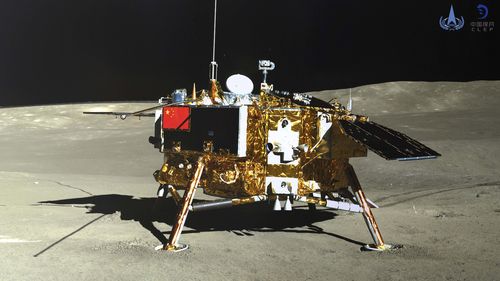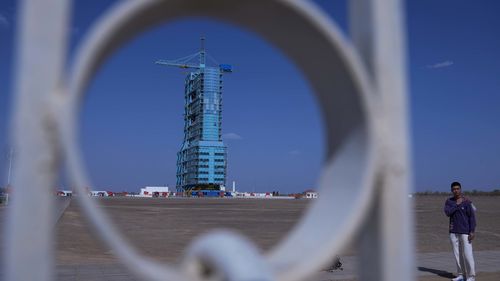
And it returned samples from the near side of the moon in 2020, the first time anyone has done so since the 1970s.
Analysis of the samples found they contained water in tiny beads embedded in lunar dirt.
China also has a three-member crew on its own orbiting space station and aims to put astronauts on the moon by 2030.
Three Chinese lunar probe missions are planned over the next four years.
The rocket carrying the Chang’e-6 lunar probe lifted off on Friday from the Wenchang launch centre on the island province of Hainan.
After orbiting the moon to reduce speed, the lander will separate from the returner.

Free from exposure to Earth and other interference, the moon’s somewhat mysterious far side is ideal for radio astronomy and other scientific work.
Because the far side never faces Earth, a relay satellite is needed to maintain communications.
The Chang’e lunar exploration probe is named after the Chinese mythical moon goddess.
Huge numbers of people crowded Hainan’s beaches to view the launch, which comes in the middle of China’s five-day May Day holiday.

After orbiting the moon to reduce speed, the lander will separate from the spacecraft and begin scooping up samples almost as soon as it sets down.
It will then reconnect with the returner for the trip back to Earth.
The entire mission is set to last 53 days.
China built its own space station after being excluded from the International Space Station (ISS), largely because of US concerns over the Chinese military’s total control of the space program amid a sharpening competition in technology between the two geopolitical rivals.
US law bars almost all cooperation between the US and Chinese space programs without explicit congressional approval.
China’s ambitious space program aims to put astronauts on the moon by 2030, as well as bring back samples from Mars around the same year and launch three lunar probe missions over the next four years.
The next is schedule for 2027.
Longer-term plans call for a permanent crewed base on the lunar surface, although those appear to remain in the conceptual phase.

Hope for besieged territory as border crossing reopens
China conducted its first crewed space mission in 2003, becoming the third country after the former Soviet Union and the US to put a person into space using its own resources.
The three-module Tiangong, much smaller than the ISS, was launched in 2021 and completed 18 months later.
It can accommodate up to six astronauts at a time and is mainly dedicated to scientific research.
The crew will also install space debris protection equipment, carry out payload experiments, and beam science classes to students on Earth.
China has also said that it eventually plans to offer access to its space station to foreign astronauts and space tourists.
With the ISS nearing the end of its useful life, China could eventually be the only country or corporation to maintain a crewed station in orbit.
The US space program is believed to still hold a significant edge over China’s due to its spending, supply chains and capabilities.
The US aims to put a crew back on the lunar surface by the end of 2025 as part of a renewed commitment to crewed missions, aided by private sector players such as SpaceX and Blue Origin.
They plan to land on the moon’s south pole where permanently shadowed craters are believed to be packed with frozen water.







